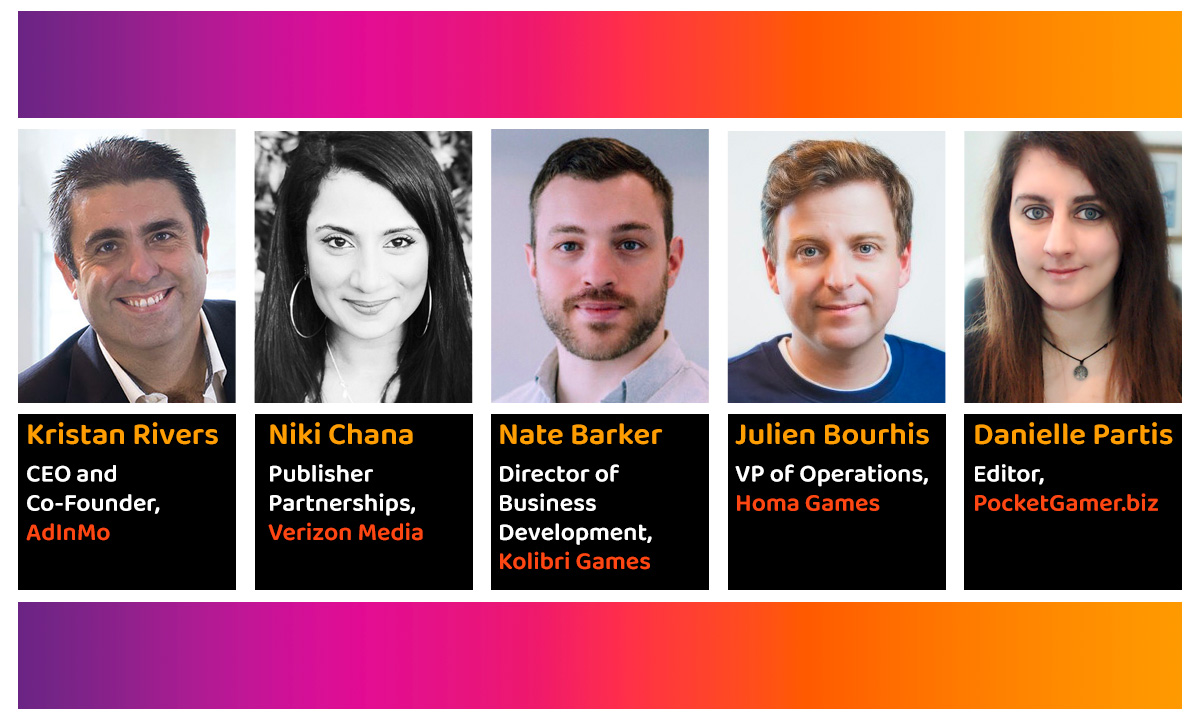Visible but not annoying. The new rules of in-game advertising

We recently held a virtual roundtable. Our CEO Kristan Rivers joined Niki Chana Publisher Partnerships at Verizon Media, Nathaniel Barker Director of Business Development at Kolibri Games, Julien Bourhis VP of Operations at Homa Games in a lively session moderated by the editor of Pocketgamer.biz Danielle Partis who got together to discuss the new rules of InGame advertising. Here’s a round-up of some of the key takeaways from the fantastic line-up of industry guests.
Deep-dive on dynamic in-game ads: Are they more beneficial than tried and tested ad monetization methods.
Julien Bourhis, (Homa Games), described new dynamic ad formats as being “very interesting because they really bridge the gap between enhancing the user experience as well as monetizing your game”. He commented that ads in this format are much more skewed towards brand advertising rather than advertisements for competitor games and he felt SDKs are now mature enough to not represent a risk for publishers and developers.
Nate Barker, (Kolibri Games), highlighted that traditional ad formats, such as interstitial ads, can be very interruptive. He believes that there is now a trend to ensure that in-game ads should be “visible but not annoying” and predicts a pushback in the way that ads function. With the upcoming IDFA adpocalypse, on IOS and possible similar steps on Android, will change the way that consumers are going to interact with ads dramatically. He anticipates that this is going to have a negative impact on the revenue aspect of how the ads are performing and believes that developers who have built their game models around a certain expectation when it comes to revenue, will be required to recalculate this. He concludes by arguing that diversifying the sources of ad revenue is going to be of paramount importance more than ever.
From a brand perspective, Niki Chana, (Verizon Media), highlights that brands want to deliver ads that are a positive experience for players and that are comfortable in the environment that they are situated in. She agrees that dynamic in game ads can deliver this for brands/advertisers.
Do ad formats need to differ depending on the game genre?
Julien identified a definite difference in the revenues of ad formats but also in the behaviour of the users in the app depending on the genre and the quality of the game.
Nate agreed that it depends on the genre, theme and the mechanics of the game. He explained that certain things simply will not work because of the game mechanics, and a lot of the platforms and ad providers are extremely clear when it comes to where interstitials can be shown for instance. He believes that if you want the ads to feel immersed then that is where dynamic in-game ads or native ads make a lot more sense as it has a value in the universe that you’ve created within the game.
What do you think the future of in game advertising looks like?
Julien believes the future looks bright. He acknowledges that developers and publishers will need to adapt to the upcoming changes including the end of IDFA and emerging geographies and thinks the latest ad formats available on the market can offer revenue diversification. He suggests that it is important that developers smartly find the right way to both monetize their game and to enhance both the user experience and the advertiser/ brand experience simultaneously and believes that is where the value will be.
Nate predicts that people are going to get a lot better at the pacing of ads, when and where to show them and how to mix them together. He also highlighted that developers and publishers cannot be entirely reliant on a singular ad format and predicts we will see a better meeting of e-commerce advertisers and mobile game publishers in comparison to the present day where most advertisements are for other games.
Niki highlighted that gathering more findings from open market activity and the performance, is “good ammunition to go to brands and speak to them around where their users are, where they are potentially spending and how you can really strategize that”. She continues “brands are going to be in a cookie-less world, it’s almost like they are going to have to rebuild themselves up depending on their business model”.
For more on what developers think about in game advertising, download our latest whitepaper here.
More…
The Path to Sustainable Revenue in Gaming
AdInMo recently participated in an industry roundtable in Berlin, here’s the key takeaways on the burning topics...
How Hybrid Monetization Is supercharging the IPL Cricket Season
As the excitement of this year’s Indian Premier League (IPL) grips millions of fans around the world, mobile cricket...
Meet us at HIT Games Berlin 2025
Team AdInMo are super excited to be heading to Berlin for the HIT Games Conference on 24th–25th April. As part of our...



